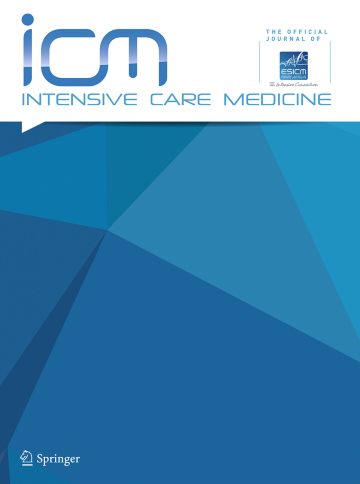超声心动图指导心房颤动的治疗。
IF 21.2
1区 医学
Q1 CRITICAL CARE MEDICINE
引用次数: 0
摘要
背景:普通人群心房颤动(AF)负担的增加转化为重症监护环境中发病率的增加,疾病严重程度进一步加剧。新发房颤已被确定为独立的死亡率预测因子。心脏病学管理指南是基于主要试验,包括不同程度的心室收缩和舒张功能障碍的门诊患者,以及左心室充盈对心房收缩的不同依赖性。重点放在心率控制与抗凝治疗相结合,同时仔细考虑对于通常已经患有某种形式的结构性心脏病的患者,通过抗心律失常药物限制任何心肌抑制。目的:危重监护超声心动图(CCE)是一种广泛应用于血流动力学不稳定患者的诊断和监测工具。它有助于识别与心律失常相关的危险因素,揭示与心律失常慢性相关的参数,并指导治疗以促进窦性心律的恢复。CCE有助于指导关键的管理决策,以寻求节奏或速率控制,并通过节奏控制,监测心律转复后左房恢复时机械窦性心律的恢复。超声心动图也可以在管理目标存在冲突的情况下提供帮助,例如在有明显出血风险的重症监护患者中,指导方针驱动的治疗抗凝。结果:本综述旨在帮助重症监护医生管理AF患者,重点关注CCE提供的许多益处,将特定的重症监护医学数据与这些重症患者心律失常管理的当前心脏病学指南相结合。本文章由计算机程序翻译,如有差异,请以英文原文为准。
Echocardiography guided management of atrial fibrillation.
BACKGROUND
The growing burden of atrial fibrillation (AF) experienced by the general population translates into an increased incidence in the intensive care setting, further aggravated by illness severity. New onset AF has been established as an independent mortality predictor. Cardiology management guidelines are based on major trials that included ambulatory patients with varying degrees of ventricular systolic and diastolic dysfunction, and with variable dependences of left ventricular filling on atrial systole. Emphasis is placed on rate control combined with anticoagulation therapy, along with careful consideration of limiting any myocardial depression by antiarrhythmic medication in patients who often already have some form of structural heart disease.
DESIGN
Narrative review Objectives: Critical care echocardiography (CCE) is well established as a widely available diagnostic and monitoring tool in haemodynamically unstable patients. It assists in identifying risk factors associated with arrhythmias, reveals parameters associated with arrhythmia chronicity, and guides therapy to facilitate a return to sinus rhythm. CCE helps guide the crucial management decision to seek either rhythm or rate control and, with rhythm control, monitors return of mechanical sinus rhythm with left atrial recovery post cardioversion. Echocardiography can also help when conflicting management goals are present, such as guideline-driven therapeutic anticoagulation in the intensive care patient that is at significant risk of bleeding.
RESULTS
This review seeks to assist intensive care practitioners managing patients with AF, with a focus on the many benefits CCE offers, blending specific intensive care medicine data to current cardiology guidelines on arrhythmia management in these severely ill patients.
求助全文
通过发布文献求助,成功后即可免费获取论文全文。
去求助
来源期刊

Intensive Care Medicine
医学-危重病医学
CiteScore
51.50
自引率
2.80%
发文量
326
审稿时长
1 months
期刊介绍:
Intensive Care Medicine is the premier publication platform fostering the communication and exchange of cutting-edge research and ideas within the field of intensive care medicine on a comprehensive scale. Catering to professionals involved in intensive medical care, including intensivists, medical specialists, nurses, and other healthcare professionals, ICM stands as the official journal of The European Society of Intensive Care Medicine. ICM is dedicated to advancing the understanding and practice of intensive care medicine among professionals in Europe and beyond. The journal provides a robust platform for disseminating current research findings and innovative ideas in intensive care medicine. Content published in Intensive Care Medicine encompasses a wide range, including review articles, original research papers, letters, reviews, debates, and more.
 求助内容:
求助内容: 应助结果提醒方式:
应助结果提醒方式:


